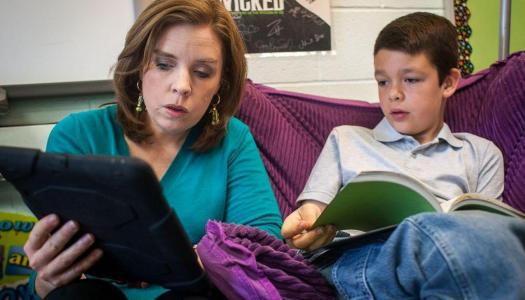The ABC's of the Common Core: R–Z
Join Our Community
Access this resource now. Get up to three resources every month for free.
Choose from thousands of articles, lessons, guides, videos, and printables.
R is for REREAD MATERIALS. Sherlock Holmes did not become one of the world's greatest detectives through a casual look at clues. He relied on careful observation and investigation. It's the same for readers. They have to revisit a text several times to grasp its details and nuances. Applying the strategy Back up and reread from the Comprehension section of the CAFE Menu empowers students. As they reread, they will understand more deeply (Boushey & Moser, 2009).
S is for STUDY WORDS. Reading closely involves focusing on the writer's words. Students must learn to think like writers as well as readers. They should consider not only the meaning of a particular word, but also its connotation. As students experience how writers experiment with language, they come to savor the magic of words. Analyzing a word as the sum of its intricate parts (prefix, base word, suffix) is another way to get to truly know it. Most certainly, worthwhile goals for all students are to Tune in to interesting words and use new vocabulary in speaking and writing and Use word parts to determine the meaning of words (prefixes, suffixes, origins, abbreviations) which are under Expand Vocabulary on the CAFE Menu (Boushey & Moser, 2009).

T is for TRAIN READERS. Students must learn to choose texts that help them grow as readers. Choosing a good-fit text is vital to a student's reading success (Boushey & Moser, 2006). The Sisters understand that a good-fit book is essential if students are going to understand and enjoy a text. Reading these good-fit texts voraciously helps students gain confidence and progress to more difficult reading material.
U is for USE TECHNOLOGY. Today's students have grown up in a digital world. Digital resources can take readers to places they may never go in person. Imagine all the things that students can learn about the world from the Internet, documentaries, television, and film. As students use digital resources to expand their knowledge base, they build background that enables them to understand new and related concepts more fully. Teachers can bring technology into the classroom by sharing recorded books and other digital media, and by demonstrating how to conduct Internet searches and evaluate websites for research.
V is for VARY READING. Wide and deep reading is guaranteed to expand a reader's horizons, acquaint the student with new authors and genres, deepen background knowledge, and increase vocabulary. When conferring with students, teachers can encourage them to add a little spice to their reading diets by trying a different genre or discovering a new author. Classroom teachers can also suggest that students mix it up a little when selecting materials for their book boxes.
W is for WAIT LONGER. The idea of wait time sounds like common sense; however, it's something that teachers have to be especially mindful of in the course of their instruction. In the era of Common Core State Standards, teachers are facilitators of student thinking, and that means the students need time to think. The same principle applies to students working in pairs or small groups; learners need to give their classmates a chance to process. All students, particularly English language learners, benefit from wait time.
X is for EXPECT MORE. High expectations yield high results. The Common Core State Standards describe the skills required of 2lst-century learners. Getting to know students as readers and writers gives teachers the opportunity to identify their areas of strength and capacities for growth.
Y is for YES! Although the CCSS are rigorous, teachers have the talent and imagination needed to make them come alive for students. They are within the reach of dedicated and inventive classroom teachers. Each day provides a new opportunity to engage students in challenging instruction that makes them think on a deeper level.
Z is for ZERO IN ON. Just as students must spend time with a text, reading and rereading it, analyzing it, and synthesizing its most important points, educators must apply the same approach to the standards. By knowing the expectations for each standard, teachers can fully prepare students to become capable and confident 21st-century learners. A great way for teachers to gain comfort with the standards is by planning lessons together and discussing the most effective ways to teach each standard.
Works Consulted
Boushey, G., & Moser, J. (2006). The Daily 5. Portland, ME: Stenhouse.
Boushey, G., & Moser, J. (2009). The CAFE book. Portland, ME: Stenhouse.
Curtis, C. (1999). Bud, not Buddy. New York: Random House Children's Books.
National Governors Association Center for Best Practices, Council of Chief State School Officers. (2010). Common Core State Standards for English Language Arts & Literacy in History/Social Studies, Science, and Technical Subjects. Washington, D.C.: National Governors Association Center for Best Practices, Council of Chief State School Officers.







